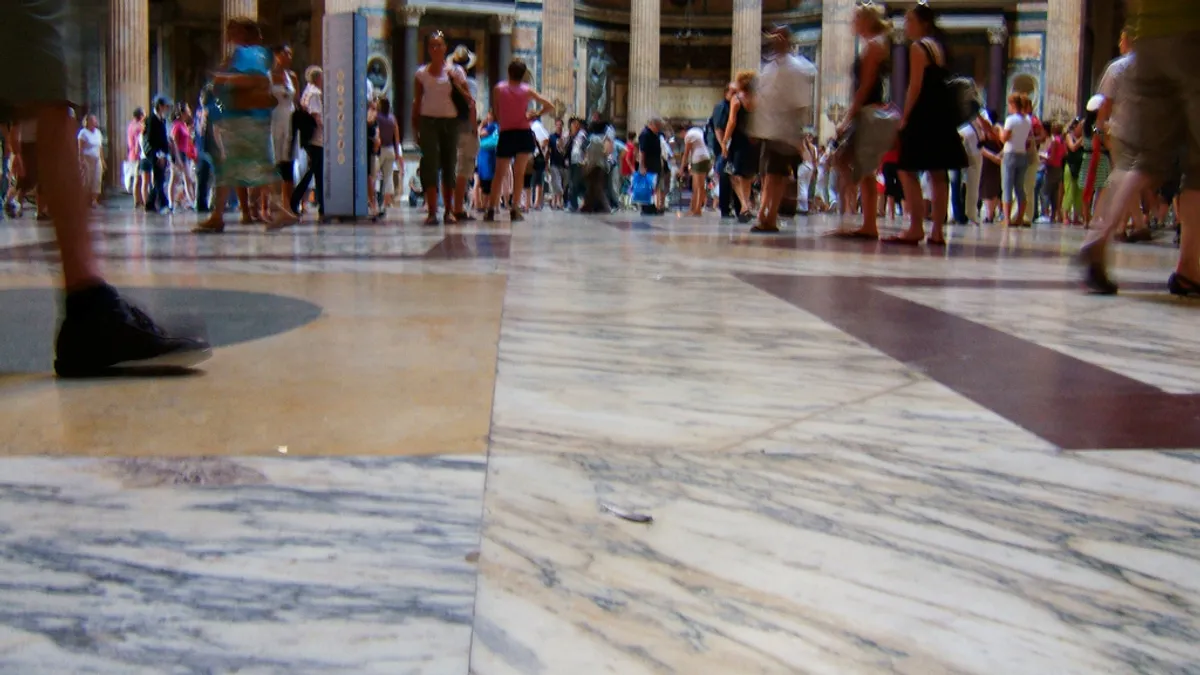Dive Brief:
- A materials research group in the Department of Civil and Environmental Engineering at Princeton University has developed a hydroxyapatite clear coating to protect marble and other stone from environmental decay.
- Made from the same calcium compound that strengthens human teeth and bones, the non-toxic coating seals cracks in marble and provides surface resistance to rain and environmental pollution.
- Advancement of the coating technology could improve the density of marble structures without impacting color and surface reflectivity.
Dive Insight:
While aging infrastructure has benefited from materials science to improve concrete durability, Princeton researchers have focused on chemical engineering to improve coatings technology for marble, offering historic preservationists front line protection against environmental decay from moisture and pollution.
Hydroxyapatite coatings are based on a reaction between phosphate salt solutions and the calcite found in marble and other similar stone (and teeth), providing surface level protection but also penetrating the stone to seal and bind miniature cracks, strengthening the material itself. Princeton researchers said applications of hydroxyapatitewill help protect marble building materials for decades.














